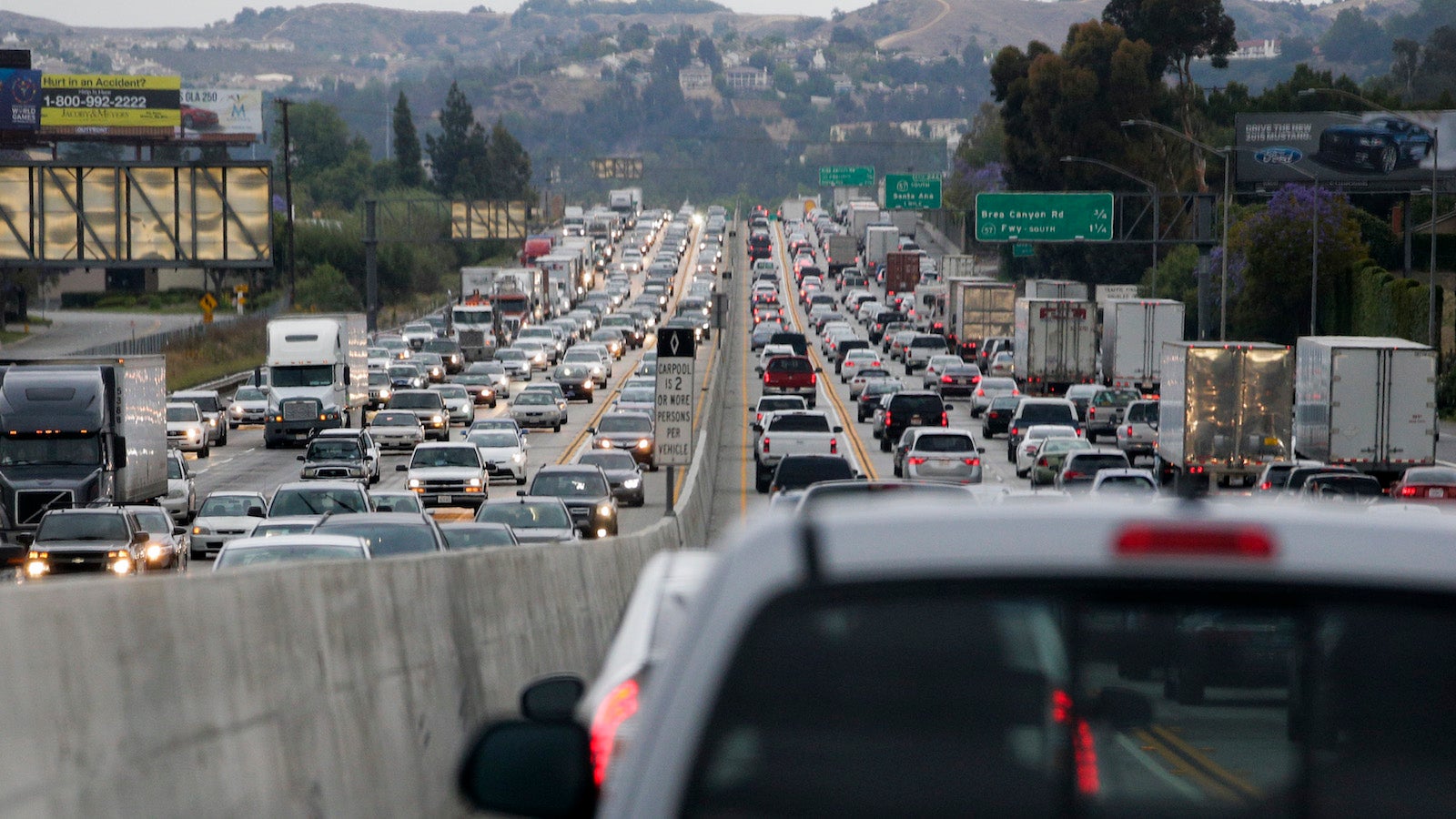Quantum computing could put a stop to traffic jams
Traffic hell is alive and well in Los Angeles. In 2017, Angelenos were stuck on the road for 102 hours each (more than four full days), costing the city $19.2 billion, according to INRIX’s annual global traffic scorecard. Traffic is almost as bad—and costly—in Moscow, Sao Paulo, and London.


Traffic hell is alive and well in Los Angeles. In 2017, Angelenos were stuck on the road for 102 hours each (more than four full days), costing the city $19.2 billion, according to INRIX’s annual global traffic scorecard. Traffic is almost as bad—and costly—in Moscow, Sao Paulo, and London.
But this is the 21st century! you say. Can’t AI fix these problems by optimizing traffic flow? The answer is a little more complicated: Consider that as you double the number of roads and intersections that you and thousands of other drivers are navigating, you’ll need to square the amount of time to crunch the numbers. Even the fastest supercomputers on Earth can’t currently calculate an optimal route in a human lifetime.
That’s where quantum computers might have an advantage.
Today’s computers comprise of on/off switches that correspond to the zeros and ones of digital logic, called “bits”. But quantum computers are filled with non-binary quantum bits, called “qubits”, that can exist as both a zero and one at the same time. By entangling a sufficiently large number of qubits together inside a quantum computer, they will be able to solve complex computational problems no single supercomputer can. This is what Marco Pistoia, a research staff member at IBM, calls the “quantum advantage.”
“Traffic optimization using quantum computers, while still unproven (and may not offer more than a quadratic improvement) is the type of problem popular to speculate about,” Pistoia says. For example, instead of having to travel down each traffic route one by one, quantum algorithms could take advantage of the qubits’ computational properties to determine the best route.
As Pistoia points out, today’s nascent quantum computers aren’t there yet, and are initially being put toward applications such as chemistry and AI where it is clearer there will be a quantum advantage. Even though IBM and other companies have developed working quantum processors, these full-scale quantum systems, by most accounts, are at least a decade away.
“We’re in this age now where quantum computers are quite small and quite noisy, so it’s tempting to think of them as bad systems, because they fail our abstract notions of what a computer is,” explains James Wootton, a quantum-error-correcting specialist at the University of Basel. “But in terms of experimental physics systems, they are huge and very clean. They are wonderful cutting-edge machines the likes of which we have never seen.”
Consider Los Angeles’ traffic nightmare again. Since 2013, the city has boasted one of the world’s most sophisticated traffic systems, with 20,000 sensors over 469 square miles feeding data into a centralized supercomputer that adjusts the timing of 4,000-plus traffic lights in real time to maximize traffic flow. This system has reduced a five mile LA commute from 20 minutes to 17.5 minutes—saving a mere 180 seconds.
The premise and promise of a quantum computer managing traffic flow is that, with the right algorithms, it could approximate the most-efficient futures of an LA rush hour and orchestrate routes that not just redirect cars and buses around a traffic jam, but steer them home on routes that prevent the traffic jam from happening in the first place.
Forward-thinking companies are already exploring quantum computing’s potential in this arena. Daimler AG, for example, is working on potential use cases, tackling complex problems such as vehicle routing for fleet logistics and autonomous cars.
Self-driving cars could also play a huge role in improving traffic flow, Pistoia says, by automatically following the most optimized route, recalculating routes in real time based on updated traffic information, and eliminating irrational human decision-making.
“It even happens to me where I don’t follow the best route,” Pistoia says. “Sometimes I won’t follow the route suggested by the app because I think I already know how to reach my destination, or I just follow my gut feeling that I know better than the computer. But the self-driving car will automatically take it and follow it.”
Of course, autonomous vehicles are not expected to comprise the majority of city traffic for decades. But traffic problems are sure to persist (or worsen) before then. Today about 4.2 billion people live in cities. The UN predicts that by 2050, urban populations will swell to 6.7 billion people. Quantum computers may be humanity’s best hope to keep those ever-more crowded cities moving as efficiently as they can.
This article is part of Quartz Ideas, our home for bold arguments and big thinkers.